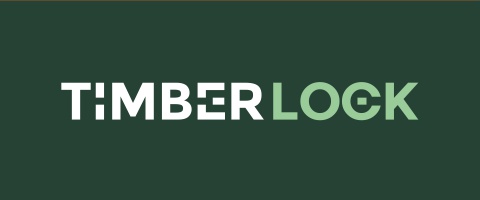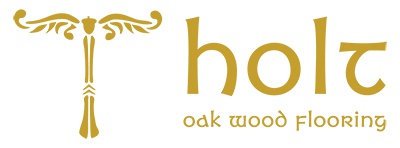Engineered wood flooring, hardwood, parquet flooring, laminate flooring and LVT are all popular flooring choices today
The flooring in your home or work space takes significant part of the surrondings, and the ideal choice of its type and apperance depends on your personal preference combined with the way you want to use it. Any choice has distinct advantages; therefore, the perfect choice depends on flooring product characteristics and their benefits.
To choose a suitable floor covering or material, you need to understand the characteristics of various types of flooring. So, that you can make selection of a lasting and fashionable product, suiting your home decor and appeal.
Solid Wood Flooring
Solid wood flooring is made from a piece of milled wood. Maple, oak, walnut, and cherry are among popular hardwood options. Its adaptability and high quality make it a popular choice for many house buyers.
However, it is one of the more expensive flooring materials. It requires regular upkeep to keep them looking fantastic; you only need professional solid wood floor cleaning once a month and putting a fresh coat of finish every three to five years to keep it glowing.
Also, the best timber floor product is solid wood flooring, either nailed-down (secret-nailing, wooden subfloors) or glued-down (concrete subfloors). It requires subfloor preparation and is quite sensitive to moisture levels in the environment; thus, it is not very common nowadays, as installation services can be more expensive and provide more durability and variety.
Solid wood increases home value, can be refinished several times, and is strong and long-lasting yet costly. However, scrapes, scratches, and dents are possible in high-traffic locations. Moisture damage is very likely.
Engineered Wood Flooring
Engineered wood flooring looks like natural wood but is less expensive than solid wood. A thin hardwood layer is bonded over a high-quality plywood substrate to create the floor. It is as strong as natural hardwood flooring and can last longer if properly maintained.
One exciting part of engineered wood is the various finishes, colors, sizes, and two layers. The top layer is the wear layer that produces the appearance, while the bottom layer is either plywood or pine lumber. The combination of both layers makes the plank less sensitive to variations in moisture and temperature.
People prefer Engineer wood because they are available in three thicknesses: 14 mm, 18 mm, and 20 mm. Each standard has a thicker top layer, which determines the lifespan of the flooring.
Choosing engineered wood flooring is a beautiful alternative for DIYers because it saves money, installation fees, and stress. Has more moisture and water-resistant than natural wood, is less likely to warp, but can only be refinished once; it is not fade-resistant. But be careful while buying as quality varies greatly.
Parquet Flooring
Parquet wood flooring is a traditional form of a wood floor with a timeless elegance that has recently gained popularity. Many contemporary installations in public building spaces, restaurants, museums and galleries prefer parquet flooring.
Parquet flooring can be installed in patterns such as the popular herringbone. It is delivered in blocks and is installed glue-down over a smooth and firm subfloor.
Because of its durability, it can use this type of flooring in various locations, such as hallways and living rooms. These ageless charms of natural wood are preserved in each block, making it durable and able to withstand traffic.
Laminate Flooring
Laminate flooring is an affordable option for homeowners who prefer an alternative to carpet but do not want to pay the high prices of solid wood or LVT. If you want the look of hardwood but can't afford it, laminate flooring may be an appealing alternative.
On the other hand, laminate flooring is a generally thinner product with a thickness of 7 - 12 mm MDF material that is imprinted with various timber or natural stone surfaces and covered by a long-lasting melamine coating. Laminate is a durable material that is often waterproof.
Like engineered wood flooring, it features a finished and sealed top layer above plywood or compressed fiber layers to provide solid and durable slats.
The fundamental distinction between laminate and natural wood flooring is that laminate does not have a natural wood top layer. Instead, it is a plastic-coated image recorded utilizing photo-realism technology of gorgeous finishes like wood, stone, ceramic tile, or stained concrete.
LVT Flooring
LVT (Luxury Vinyl Tiles) flooring is well-known for its durability. Vinyl offers a flexible, cushioned floor surface that is durable and low-maintenance. LVT mimics the appearance of natural timber, stone, or ceramic floor while being more durable and entirely waterproof. As a result, it is suitable for kitchens, restrooms, bathrooms, and even commercial flooring. With such a large selection of exquisite vinyl flooring, you can have a perfect one for any space.
Going for LVT is an excellent choice for areas, where moisture may be an issue. Their numerous layers will provide stability, ensuring no moisture absorption or expansion due to water.
Lastly, LVT flooring is similar to laminate flooring; instead of MDF, it reinforced vinyl as the foundation material, making it the most durable of all five exciting floorings. Waterproof, long-lasting, warmer than tiles and laminate, softer than tiles and laminate, and available in various colors. Ideal for both business and residential applications.
Choosing superb flooring for your home isn't as simple as picking the one that looks the best or is on sale. The critical considerations are moisture, durability, ease of care, and budget. A new floor is an investment, so your floor selection should balance your demands with your taste.
Ensure you thoroughly discuss your ideas with your chosen flooring contractor to meet your specifications. Are you considering installing a new floor or refurbishing your home or office? Worry no more! Contact us today for reliable and affordable flooring.









